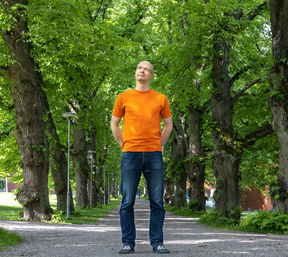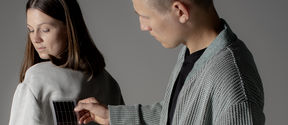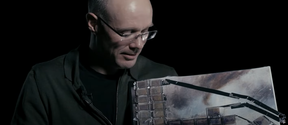Janne Halme, for how long have you been at Aalto and what do you teach?
I started my Master’s studies at the Helsinki University of Technology (nowadays Aalto University) in 1996, and I graduated in 2002. I then did my PhD on dye-sensitised solar cells in the research group of Professor Peter Lund. It was a novel research area for the group at the time, and I got an opportunity to set up a research laboratory for it.
Now I teach a course in solar energy engineering. There are yearly about 80 students from different degree programmes, such as applied physics, electrical engineering, industrial engineering and management, energy engineering and chemical engineering.
I also teach fuel cell and hydrogen technology, the only course at Aalto in this area. Thirdly, I teach multidisciplinary energy perspectives. It is aimed at all Aalto students, and we are hoping to reach an as wide range of students as possible. The work is done in multidisciplinary teams, and the lectures deal with energy from different perspectives - including art, design, and ecology. The course is designed to help you see energy technology from unexpected perspectives.
In addition to these courses, I also teach entrepreneurship in engineering, and advise researchers at the Department of Applied Physics to commercialise research-based inventions.
What is the best thing about teaching?
I like to do things in new and different ways and use innovative teaching methods and approaches. I think about how to create a well-paced, structured story that best communicates what is being taught. The story helps to structure what I bring up and how.
I think while I talk. I don't prepare lectures so carefully that I have a set of notes ready. I prepare the lecture in my mind as a logical whole. However, through thinking, I may come across an idea or question that I hadn't thought of before. Even better if the question comes from the students.
The most rewarding thing is when students are interested and enthusiastic about the topic and dedicated to learning. This is reflected in the questions they ask. The best thing is to think together with the students.
What is the best thing about the topics you teach?
Solar energy is just awesome! It's fantastic that a slab of material can generate electricity from light without moving parts. You can be proud of what you can do with physics.
Tell us something interesting about yourself?
I really like dancing, such as hip hop. Now I take dancing classes like body jam, but I've danced traditional Finnish and Latin American dance, lindy hop, salsa and breakdance, among others.
Survival skills and nature are also a hobby for me. In the summer I spent a week in the northern wilderness without any food other than a kilo of fat and fishing gear.
I collaborate with the artist Bartaku. It's fascinating to make art that comes out of my own research. For us, solar cells made from natural dyes are a medium for visual, painting and sculptural art, through which we reflect on the relationships between technology, human and nature.
What greetings would you like to send to the students?
At the lunch table, people often ask whether university studies are a wise investment, given the time away from working. I think life is long. University is a great place to develop yourself and your thinking, in a community where all areas of technology, economics, and the arts present. You are in an interesting place. Make the most of it!






